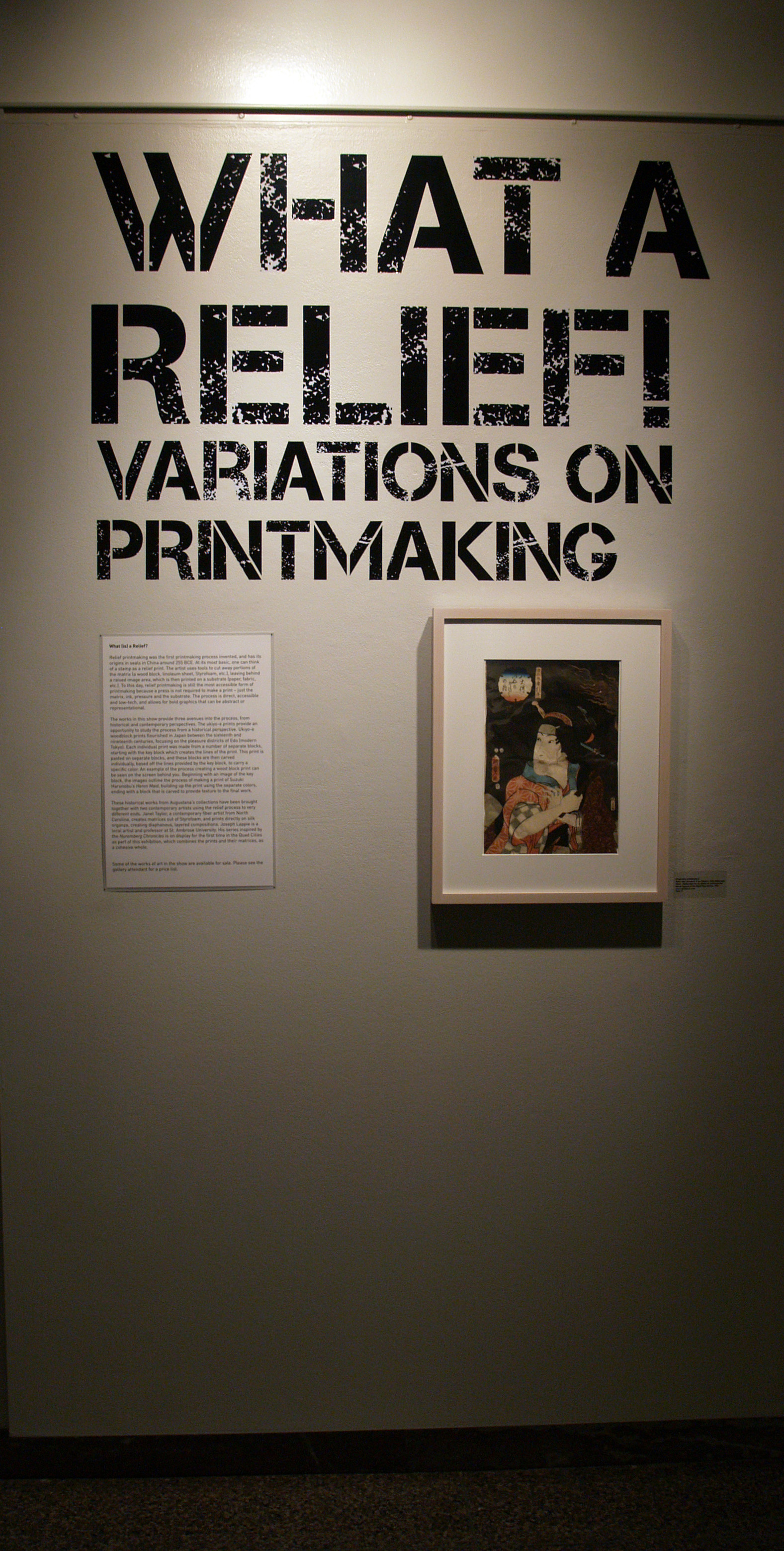EXHIBITION OVERVIEW
Relief printmaking was the first printmaking process invented, and has its origins in seals in China around 255 BCE. At its most basic, one can think of a stamp as a relief print. The artist uses tools to cut away portions of the matrix (a wood block, linoleum sheet, Styrofoam, etc.), leaving behind a raised image area, which is then printed on a substrate (paper, fabric, etc.). To this day, relief printmaking is still the most accessible form of printmaking because a press is not required to make a print – just the matrix, ink, pressure and the substrate. The process is direct, accessible and low-tech, and allows for bold graphics that can be abstract or representational.


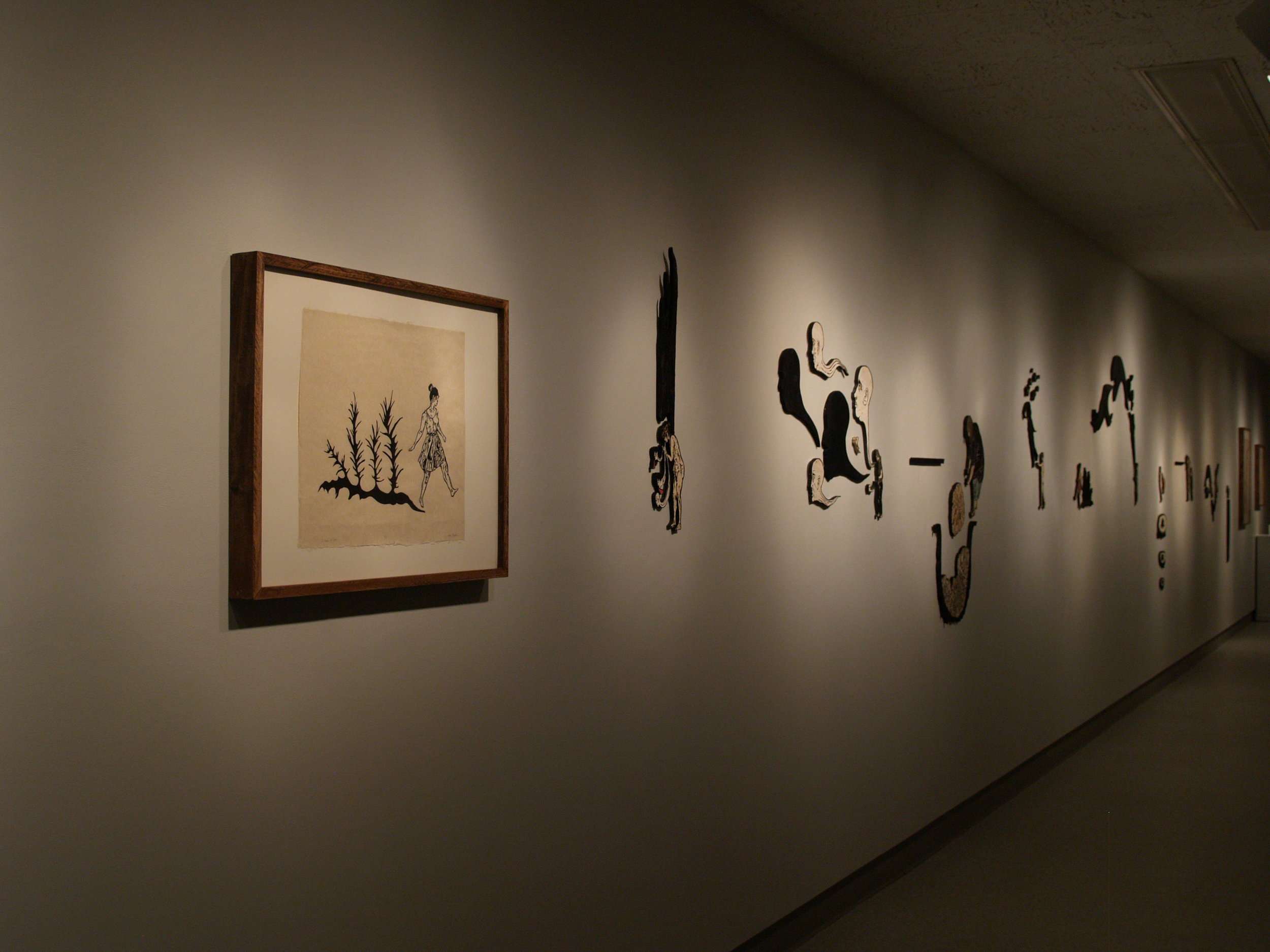
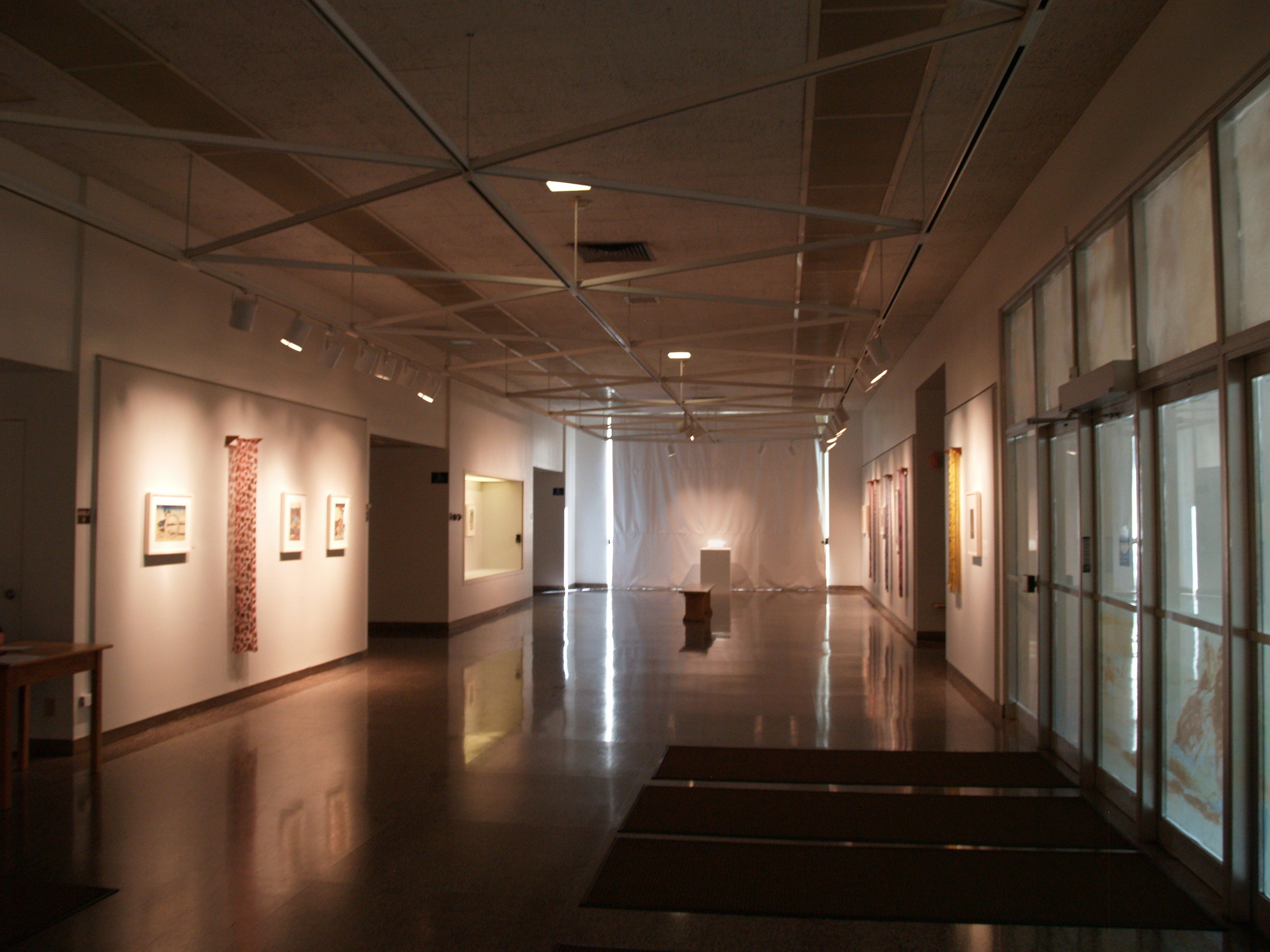
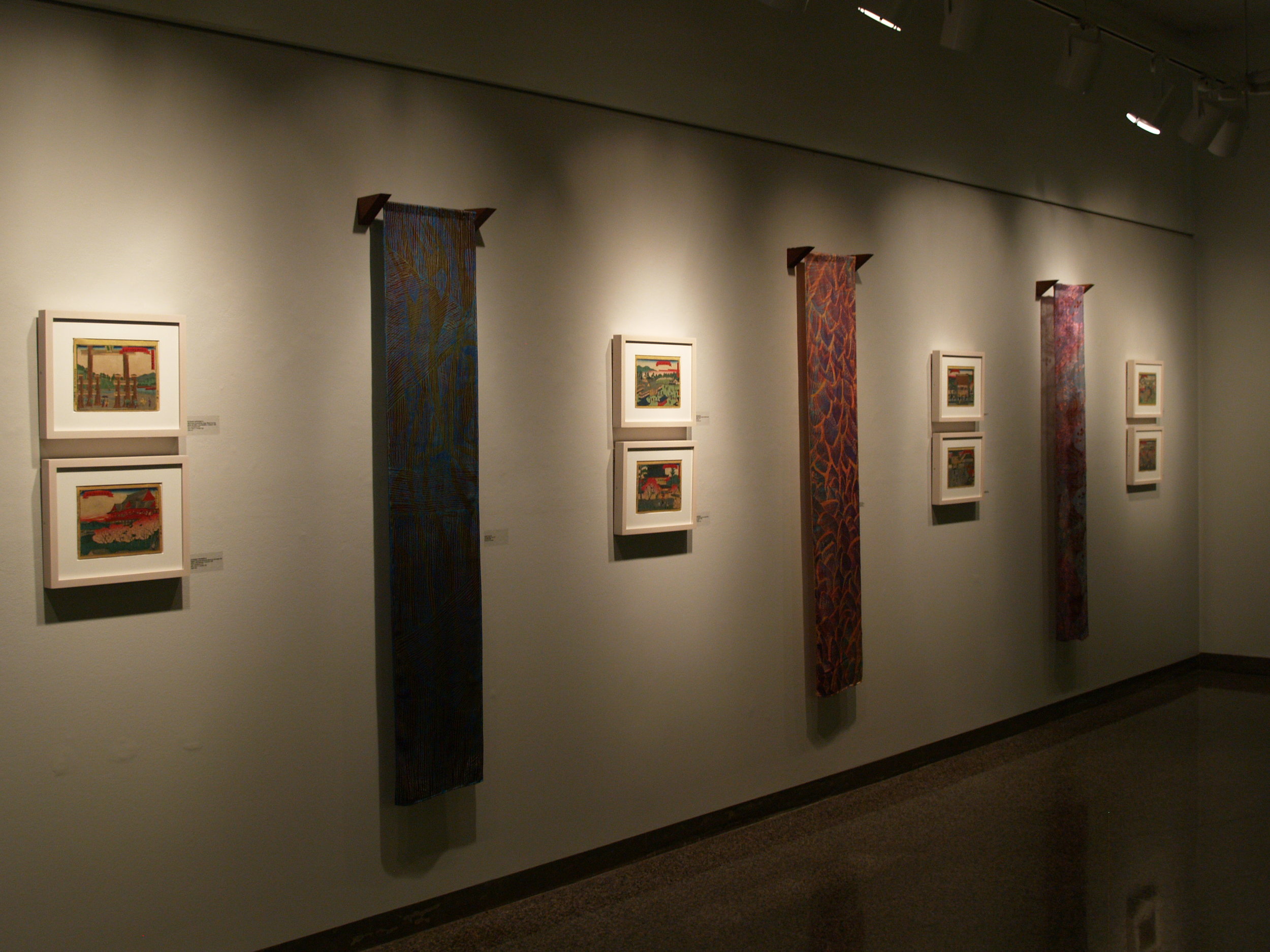
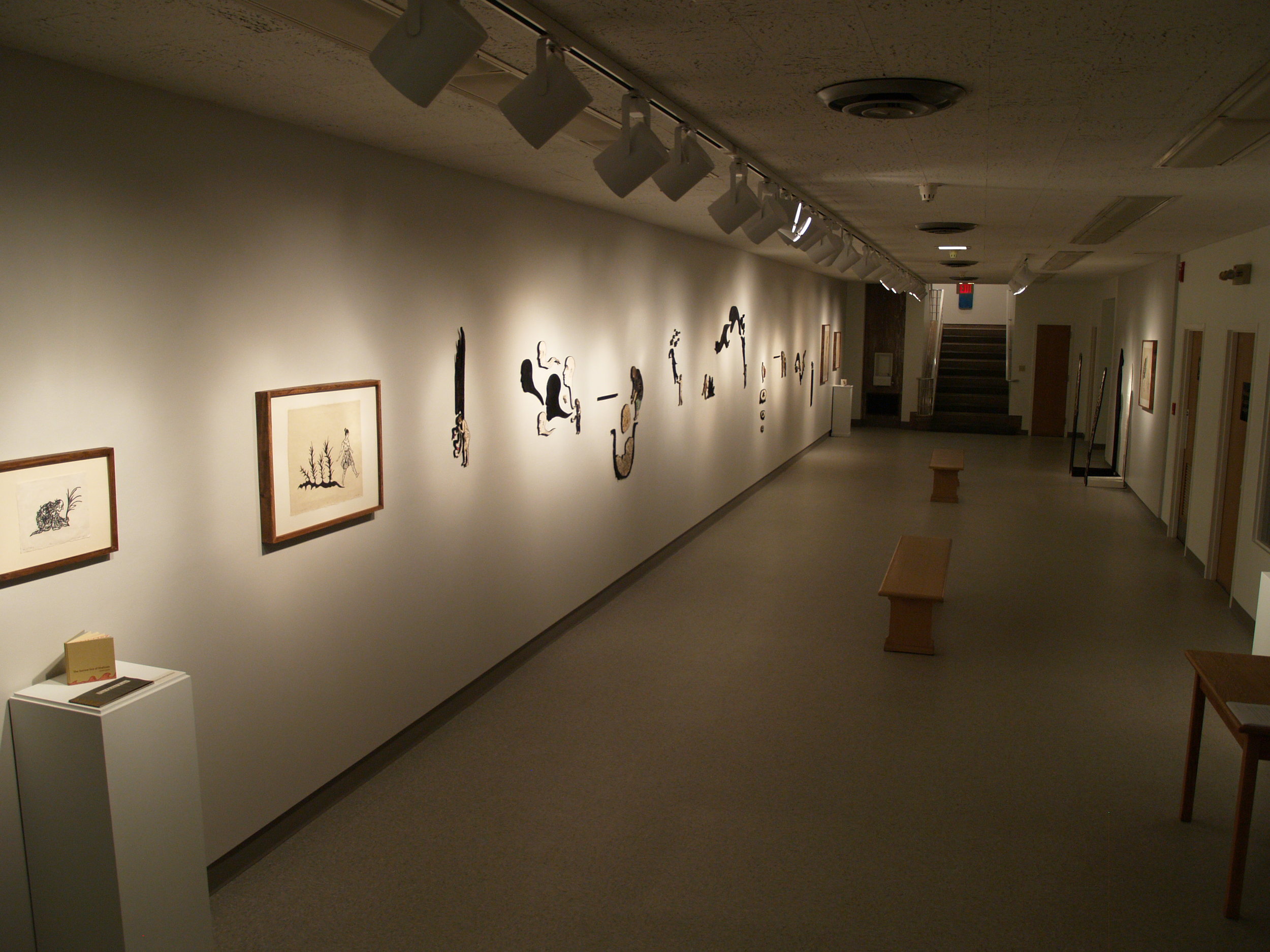
The Ukiyo-e works from Augustana’s collections have been brought together with two contemporary artists using the relief process to very different ends. Janet Taylor, a contemporary fiber artist from North Carolina, creates matrices out of Styrofoam, and prints directly on silk organza, creating diaphanous, layered compositions. Joseph Lappie is a local artist and professor at St. Ambrose University. His series inspired by the Nuremberg Chronicles is on display for the first time in the Quad Cities as part of this exhibition, which combines the prints and their matrices, as a cohesive whole.
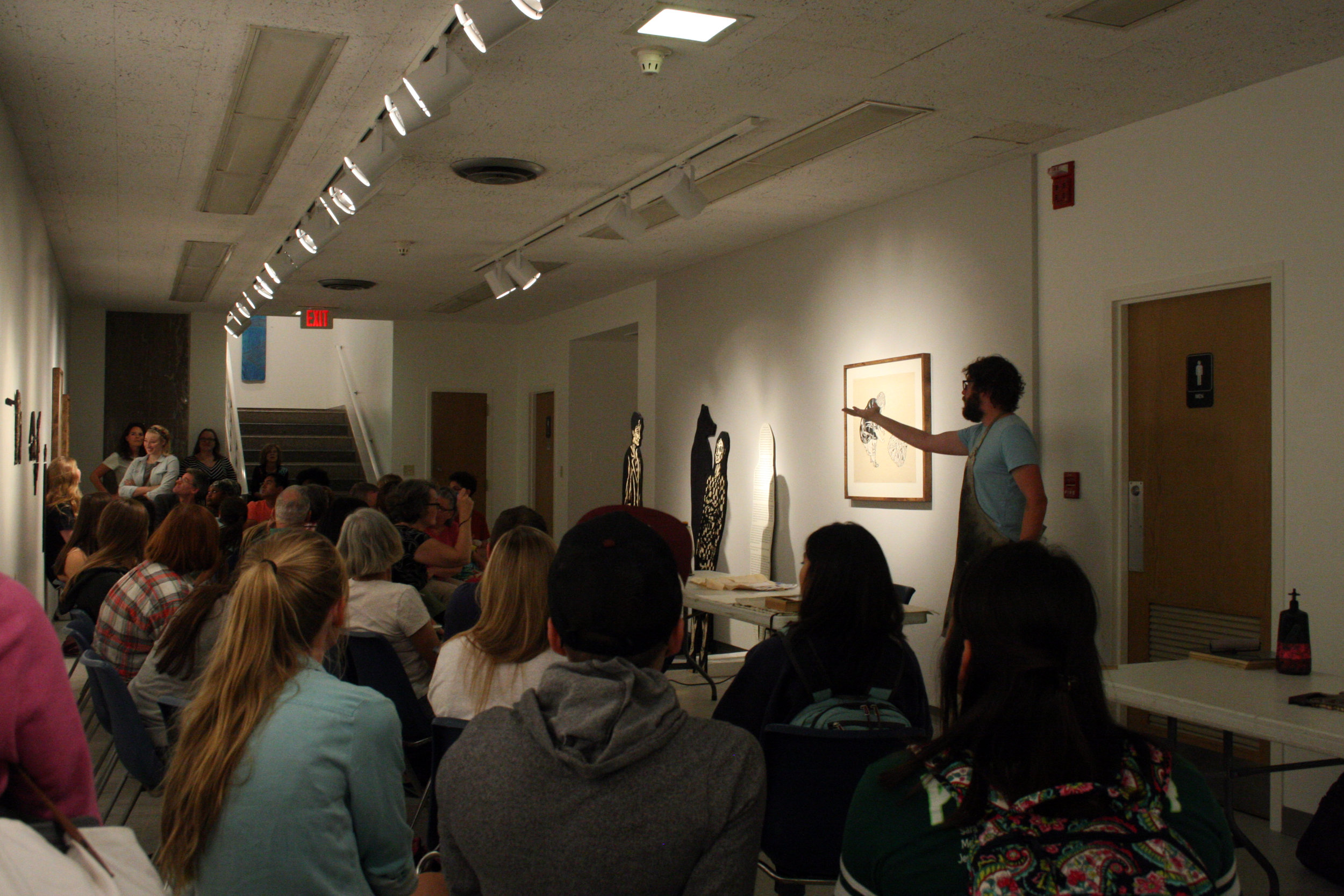
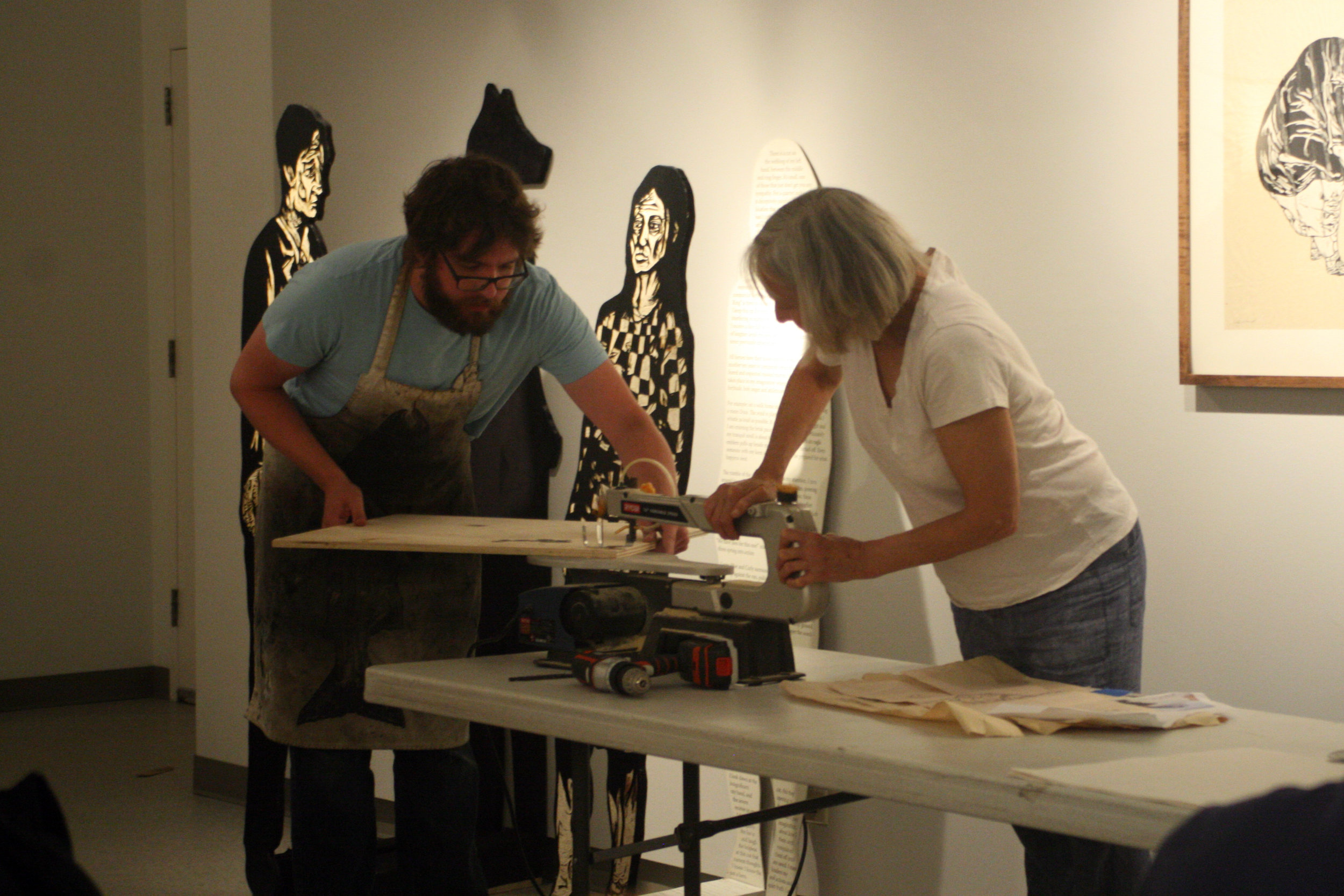
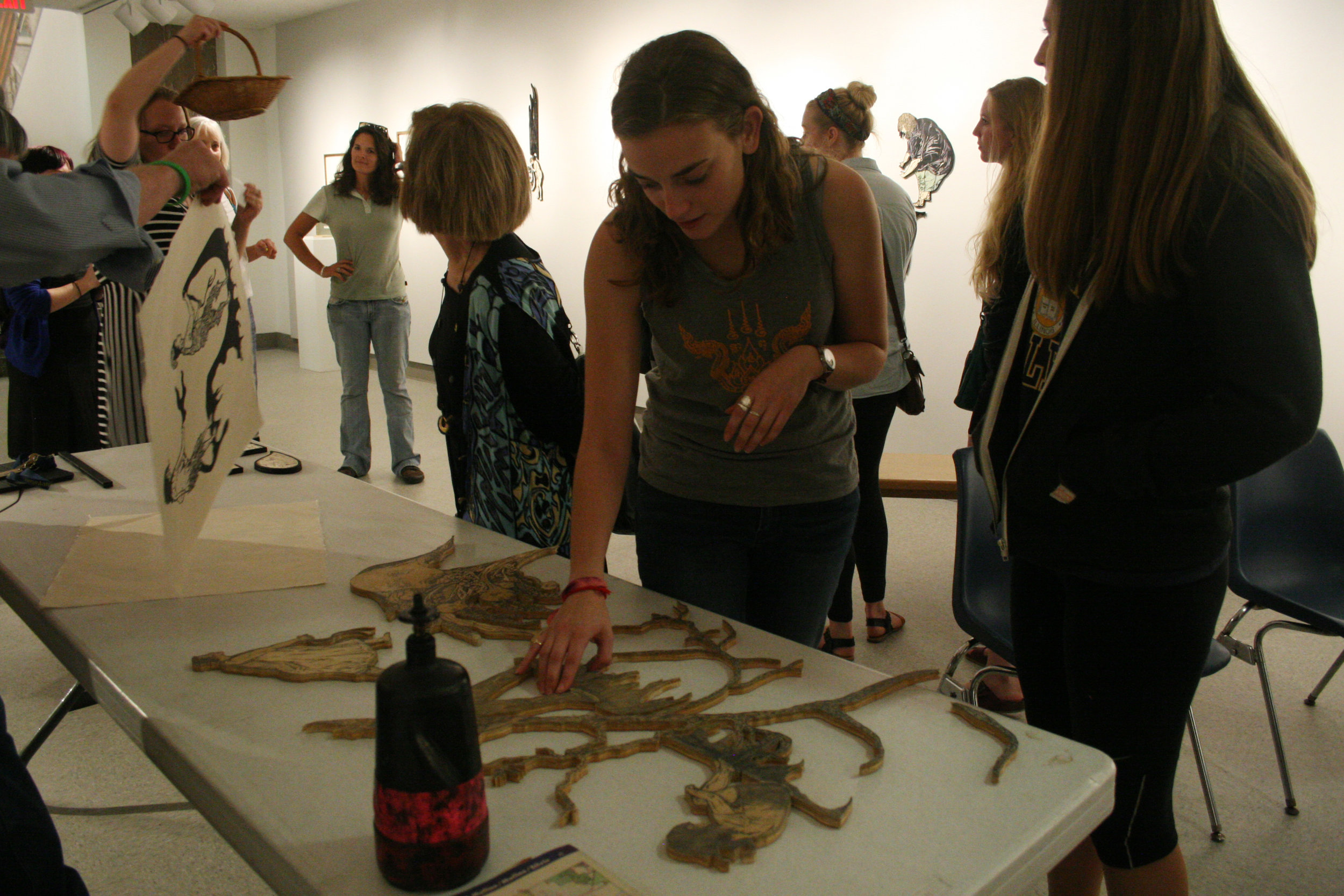

PROGRAMMING: ARTIST DEMO + LECTURE
JANET TAYLOR LECTURE, "Transitions/Reinventions"
An artist talk by textile designer Janet Taylor. Taylor discussed her exhibition in the Centennial Hall Galleries, as well as her journey transitioning from academia to a self-supporting artist. Earlier in the day, Taylor held a workshop for a fiber arts class on her process of relief printmaking.
JOSEPH LAPPIE DEMO
Joseph Lappie is an Associate Professor at St. Ambrose University where he teaches Book Arts, Papermaking, Printmaking and Drawing. He received his BFA in Painting and Graphic Design from Ball State University and his MFA in Interdisciplinary Book & Paper Arts from Columbia College Chicago. His artist's books are in over fifty collections throughout the United States. In his demonstration, he detailed his process, from its conceptual framework to the prints themselves, allowing audience members to come up and make a print to take home.
PROGRAMMING: PERFORMANCE
DEB DAKIN, "OCEANS AND CROSSINGS"
Deb Dakin, Viola Faculty in the Music Department, and Claire Kovacs, Director of the Augustana Teaching Museum of Art, presented OCEANS and CROSSINGS, a hybrid recital and lecture.
1685 was an important year in music. Yatsuhashi Kengyo, “father of the modern koto” and composer of the oldest known piece written for the instrument, died in Japan. This same year also saw the birth of Johann Sebastian Bach in Eisenach, a town in (what is now) Germany. Separated by oceans, neither man knew of the other composer, or their homeland and culture. But each created an influence on music that continues to this day.
Eastern and Western arts draw upon different aesthetics, and their traditional musics can sound as though they have very little in common. In this program, violist Deborah Dakin will explore ways to listen with understanding to the differences in the music of Yatsuhashi and Bach. We will also hear how the same ocean that separated Bach and Yatsuhashi is crossed by contemporary Chinese composer, Bright Shen.
When we cross our personal ocean to unfamiliar music, we frequently return home to a deeper experience with the music we already know. In learning about the “other”, we come to know ourselves differently.
These musical pieces will be discussed in relationship to works from Augustana's collections, providing visual counterpoints to their aesthetics, structure and narrative.

